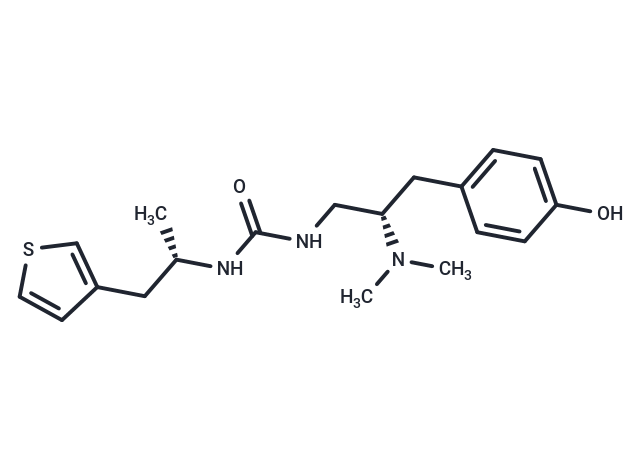Shopping Cart
- Remove All
 Your shopping cart is currently empty
Your shopping cart is currently empty


| Pack Size | Price | Availability | Quantity |
|---|---|---|---|
| 1 mg | $39 | In Stock | |
| 2 mg | $55 | In Stock | |
| 5 mg | $89 | In Stock | |
| 10 mg | $129 | In Stock | |
| 25 mg | $215 | In Stock | |
| 50 mg | $313 | In Stock | |
| 100 mg | $496 | In Stock | |
| 1 mL x 10 mM (in DMSO) | $98 | In Stock |
| Description | PZM21 is an effective and selective μ opioid receptor agonist (EC50: 1.8 nM). |
| Targets&IC50 | μ opioid receptor:1.8 nM (EC50) |
| In vitro | At hERG, PZM21 has an IC50 of between 2 and 4 μM, 500- to 1,000-fold weaker than its potency as a μOR agonist. Signalling by PZM21 and other μOR agonists appears to be mediated primarily by the heterotrimeric G protein Gi/o, as its effect on cAMP levels is eliminated by pertussis toxin and no activity is observed in a calcium release assay [1]. |
| In vivo | PZM21 is a highly selective μOR activator with significant Gi activation and minimal activation of β-arrestin-2, differentiating it from morphine by demonstrating greater efficacy in the affective aspect of pain relief compared to the reflexive aspect, without causing respiratory depression or exhibiting morphine-like addictive qualities in mice at equivalent analgesic doses. In a mouse hotplate assay, PZM21 achieved a maximal effect of 87% for pain relief 15 minutes post-administration of the highest dose [1]. Furthermore, PZM21 exerts a durable analgesic effect on central nervous system (CNS)-mediated pain without the typical opioid-induced side effects of respiratory depression and constipation [2]. |
| Molecular Weight | 361.5 |
| Formula | C19H27N3O2S |
| Cas No. | 1997387-43-5 |
| Storage | Powder: -20°C for 3 years | In solvent: -80°C for 1 year | Shipping with blue ice. | ||||||||||||||||||||||||||||||
| Solubility Information | DMSO: 27.5 mg/mL (76.07 mM) | ||||||||||||||||||||||||||||||
Solution Preparation Table | |||||||||||||||||||||||||||||||
DMSO
| |||||||||||||||||||||||||||||||

Copyright © 2015-2024 TargetMol Chemicals Inc. All Rights Reserved.